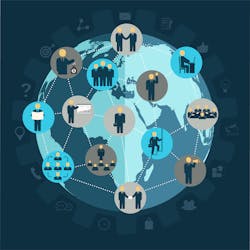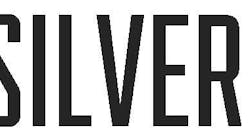Social media monitoring have significant and growing implications for security operations. The questions will be whether security executives and law enforcement can fully harness the power of this tool.
Social media powers myriad virtual communities in a discussion of a wide scope of topics. Those conversations have implications for a number of organizational functions including security operations. Understanding and reacting to these conversations can improve intelligence and provide security personnel with valuable information to assist in securing persons, property, and assets. In this introduction we will discuss the growth of social media, its acceptance and use in the public safety community and the development of tools to fully understand and harness its power in a way to best benefit security executives.
Can the original Star Wars trilogy provide guidance for security executives on the issue of social media? The answer lies, not surprisingly, in an understanding of “The Force”. In the initial episode of the trilogy “The Force” is introduced and a small group of individuals come to understand its power for good. In the second installment the heroes are introduced to the concept that the “The Force” can have a dark side and its power can also be used for evil. In the final installment of the trilogy the heroes gain a better understanding and control over “The Force” in all its dimensions, which helps them leverage this powerful tool for good.
So it is with social media – the new and powerful communication force. Being able to harness the benefits of social media can provide security executives a useful tool if they learn to control the potential dark side. The following article will help show how security and public safety professionals can let the Social Media Force be with them.
Episode IV: A New Hope -- The Rise of Social Media
The remarkable growth of social media is well documented. Beginning in 2003 with My Space and other early attempts at social media connection over the internet, social media sought to connect individuals and groups. With the advent of social media powerhouses like Facebook, created in 2004, and Twitter in 2006, the social media world has exploded. From a technology that didn’t even exist in 2003, Facebook is now a virtual community of over 1.39 billion persons in 2014. If it were a country, Facebook would be the planet’s third largest. Twitter has experienced similar growth, with over 200 million users reported at the end of 2014 making over 500 million tweets per day. While Facebook and twitter are only the largest of a suite of social media applications, there are a growing amount of other content outlets that include Instagram, Picasa, YouTube, Flickr and yik yak.
The evolution in mobile devices, along with the advent of the smart phone and tablet has mirrored the explosion of social media. These mobile devices continue to fuel the growth of social media making it easier for individuals to join in virtual conversation almost anytime and anyplace. In 2014 Twitter reported over 80 percent of their usage was over mobile devices, while Facebook reports 1.19 billon mobile users.
While the social media conversations powered by these new technologies were initially held at arms-length by groups like security and law enforcement; groups like marketing and advertising quickly embraced them. Some forward thinking security and public safety professionals have slowly begun to explore the use of social media. Among the earlier adopters in the public safety space has been the emergency management community.
Initially there was a debate among emergency responders regarding the relevancy of social media, and would it be more than rumor mongering. Mounting evidence of practical applications and real experiences, along with some compelling academic study, has demonstrated to emergency services personnel that social media can be an effective means of communicating important emergency information. FEMA, for example, made no real use of social media in 2006. However, by the end of 2008 FEMA had begun using Twitter, and by 2013 FEMA reportedly had three Facebook pages and 34 Twitter accounts, according to National Defense magazine.
Currently FEMA maintains a webpage outlining its official accounts and notes, “We [FEMA] utilize numerous social media accounts as part of our mission to provide information to the public before, during, and after a disaster. If you come across a social media account that is not listed on this page, then it is not an official FEMA account. FEMA also offers a free training Course on social media usage.
In 2010, the International Association of Chiefs of Police (IACP) also began to understand the value of social media, developing a concept paper and model policy for social media usage for law enforcement. The concept paper identified main categories of law enforcement use of social media such as criminal investigation, community outreach, and information and recruiting and employment.
Episode V: The Empire Strikes Back -- Social Media Reveals a Dark Side
In Star Wars’ second installment, we see that “The Force” can be destructive. And as the social media outlets continue to grow and gain loyal followings, its dark side has also been revealed. Fueled by a sense of anonymity in some spaces, criminal activity on social media has created a totally new type of threat. It is reported by Zephoria.com that there are over 83 million fake profiles on Facebook.
The range of criminal activity aided by social media is varied. In 2013 the National White Collar Crime Center issued a summary of some of some of the common criminal activity perpetrated thorough the use of social media. That summary focused on crimes like burglary, social engineering and phishing, cyberstalking and identity theft, while sexual predators were among the early adopters of MySpace and Facebook. There is also a significant and growing concern over the phenomena of cyberbullying. To counter these darker activities there are attempts being made in various jurisdictions to prohibit sexual predators from accessing social media and laws to criminalize cyberbullying. Both of these initiatives face significant First Amendment challenges.
A new focus of concern regarding criminal use of social media is that of terrorist recruitment and direction. Terrorist organizations like Al Qaeda have long seen the value of social media. The creation of jihadist websites has expanded. The anonymity of the internet has proved to be a fertile breeding ground for terrorist recruitment, training and the dissemination of information and propaganda. The most disturbing use of social media by terrorist organizations is the series of recent ISIS video postings of beheadings on YouTube.
Like any technology, as law enforcement, security and emergency management develop positive uses for emerging social media; the criminal element is quick to adapt equally offensive and counter-productive paths for its use. The race is now on as to who will exercise better control over “The Force” of social media.
Episode VI: Return of the Jedi -- Development of Monitoring Tools for Social Media Understanding
The final chapter in the Star Wars trilogy demonstrated how the forces of good have disciplined themselves to understand “The Force” and have learned to learn to exercise control over all its aspects. So let it be with social media.
While early public safety effort have focused on simpler uses of social media , communicating and responding to messages, creation of information campaigns that used social media for dispersal, discrete forensic use of social media outputs for criminal investigation and for background checks. Law enforcement and security professionals have only begun to tap its potential.
Understanding the ebb and flow of “The Force” provides our Star Wars heroes the ability to take it to the next level. There is a correlation to power social media’s power, as we move beyond the basic broadcast and search functions that have characterized early use. The real key to social media is in its ability to hear what is being communicated and to present a platform for analyzing that data. With an increased interest by security and law enforcement, there are now platforms being developed that can be related to data geographically and in real time. These tools can provide public safety professionals ways to understand and react to events as they occur.
The rise of sophisticated analytic monitoring tools like those from Goefeedia, a company that has pioneered location-based social media monitoring, will allow security and public safety personnel to understand social media activity that occurs in a defined space and time and then relate it to defined subject matter. The information derived from that data can be turned into actionable intelligence, and where necessary, categorized and stored for further analysis. The ability to fully understand the scope of social media and relate it to a real time location and environment will certainly advance the true power of social media for public safety and law enforcement. These analytic tools allow for the identification of threats and patterns that can lead to proactive responses.
Conclusion
Just as the Jedi has the light saber, social media monitoring tools provide public safety and security executives with an elegant instrument to power their operations. While there are a growing number of monitoring tools in the market, some things to watch for include:
- Ease of Use—like any software system the key to success depends on the interface with the user. The system’s ability to adjust to the user’s desire for information displayed geographically or by topic to the terms of a specific inquiry is critical.
- Data Quality—the social media world is a rich source of information, but not all systems have access to the full range of social media resources. Understanding the ability of the tool to access a range of data directly from a source is a key to ensuring quality.
- Speed—the ability of the system to deliver data in near real time is an important feature for users who seek to use this data in conjunction with other systems to deliver true situational awareness to power response operations.
Public safety and security markets now have social media monitoring options that can deliver on all these requirements, so let the Force be with you.
About the Author:
Don Zoufal is an Independent Safety and Security Consultant working with clients looking to introduce emerging technology to the public safety market. He has held a series of high level public sector safety and security posts including First Deputy for the City of Chicago’s Office of Emergency Management and Communications and Deputy Commissioner for Safety and Security for the City of Chicago’s Department.


